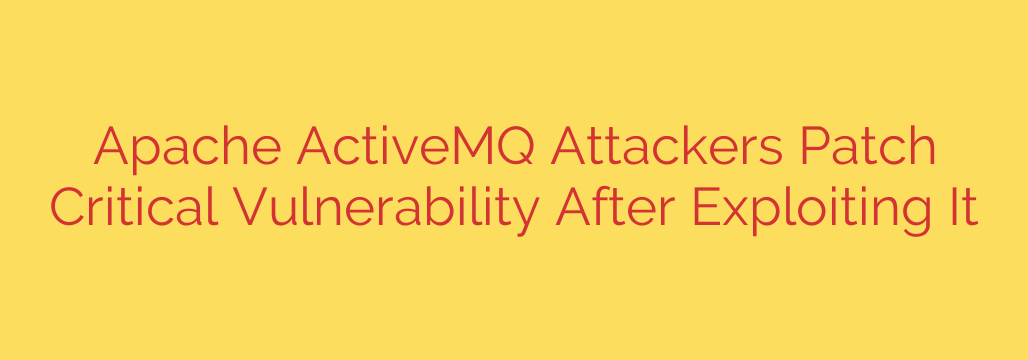
Urgent Security Alert: Critical Apache ActiveMQ Flaw Under Active Attack
A severe vulnerability in the popular open-source message broker, Apache ActiveMQ, is being actively exploited by attackers to deploy ransomware and other malicious payloads. This critical flaw, tracked as CVE-2023-46604, allows for unauthenticated remote code execution (RCE), giving threat actors complete control over vulnerable servers.
What makes this situation particularly dangerous is the unusual tactic employed by the attackers. After successfully breaching a system, they have been observed patching the very vulnerability they used to gain entry. This is not an act of goodwill; it’s a strategic move to lock out competing hacking groups and secure their exclusive access to the compromised server. This means that even if a system appears to be patched, it may already be under an attacker’s control.
Understanding the CVE-2023-46604 Vulnerability
The vulnerability resides in how Apache ActiveMQ handles serialized class types, creating a weakness that can be triggered by sending a malicious message to an exposed server. With a severity score of 10.0 out of 10, it represents the highest possible level of risk.
An attacker can exploit this flaw without needing any user credentials or prior access. A successful attack allows them to execute arbitrary code on the target server with the same privileges as the ActiveMQ service, which often runs with high-level system permissions.
The following versions of Apache ActiveMQ are affected:
- Apache ActiveMQ versions 5.18.0 before 5.18.3
- Apache ActiveMQ versions 5.17.0 before 5.17.6
- Apache ActiveMQ versions 5.16.0 before 5.16.7
- All legacy Apache ActiveMQ 5.x versions
From Exploitation to Ransomware
Security researchers have observed a clear attack chain. First, threat actors scan the internet for public-facing, unpatched ActiveMQ servers. Once a target is identified, they exploit CVE-2023-46604 to gain an initial foothold.
From there, they download and execute next-stage malicious tools. In many documented cases, the ultimate goal is the deployment of ransomware. Attackers have been linked to variants of the HelloKitty ransomware, a well-known strain responsible for significant financial and operational damage across various industries. By patching the vulnerability post-exploitation, they ensure their ransomware deployment cannot be interrupted by other malicious actors.
Immediate Steps to Secure Your Servers
The presence of this vulnerability poses an immediate and severe threat to any organization using affected versions of ActiveMQ. Administrators must take urgent action to mitigate the risk.
Patch Immediately: The single most important step is to update to a secure version. The Apache Software Foundation has released patches to address this flaw. Upgrade immediately to versions 5.18.3, 5.17.6, or 5.16.7 or a newer, secure release.
Hunt for Indicators of Compromise (IOCs): Since attackers are patching the systems they compromise, simply applying the update is not enough. You must assume your server may have already been breached. Thoroughly investigate your systems for any signs of malicious activity, including:
- Unusual network connections or traffic originating from the ActiveMQ server.
- Suspicious processes or services running on the machine.
- Unfamiliar files or scripts, particularly in temporary directories.
- Evidence of reconnaissance or lateral movement within your network.
Isolate and Rebuild If Necessary: If any signs of compromise are found, the safest course of action is to isolate the server from the network immediately and rebuild it from a known-good backup. Relying on the attacker’s “patch” is not a security strategy, as they have almost certainly left a backdoor for persistent access.
Restrict Access: As a best practice, never expose your ActiveMQ brokers directly to the public internet unless absolutely necessary. Place them behind a firewall and restrict access to only trusted IP addresses to minimize your attack surface.
This evolving threat highlights the importance of proactive patch management and vigilant security monitoring. The attackers’ cunning tactic of patching systems for their own benefit serves as a stark reminder that a seemingly secure system may be hiding a deeper compromise.
Source: https://go.theregister.com/feed/www.theregister.com/2025/08/19/apache_activemq_patch_malware/








